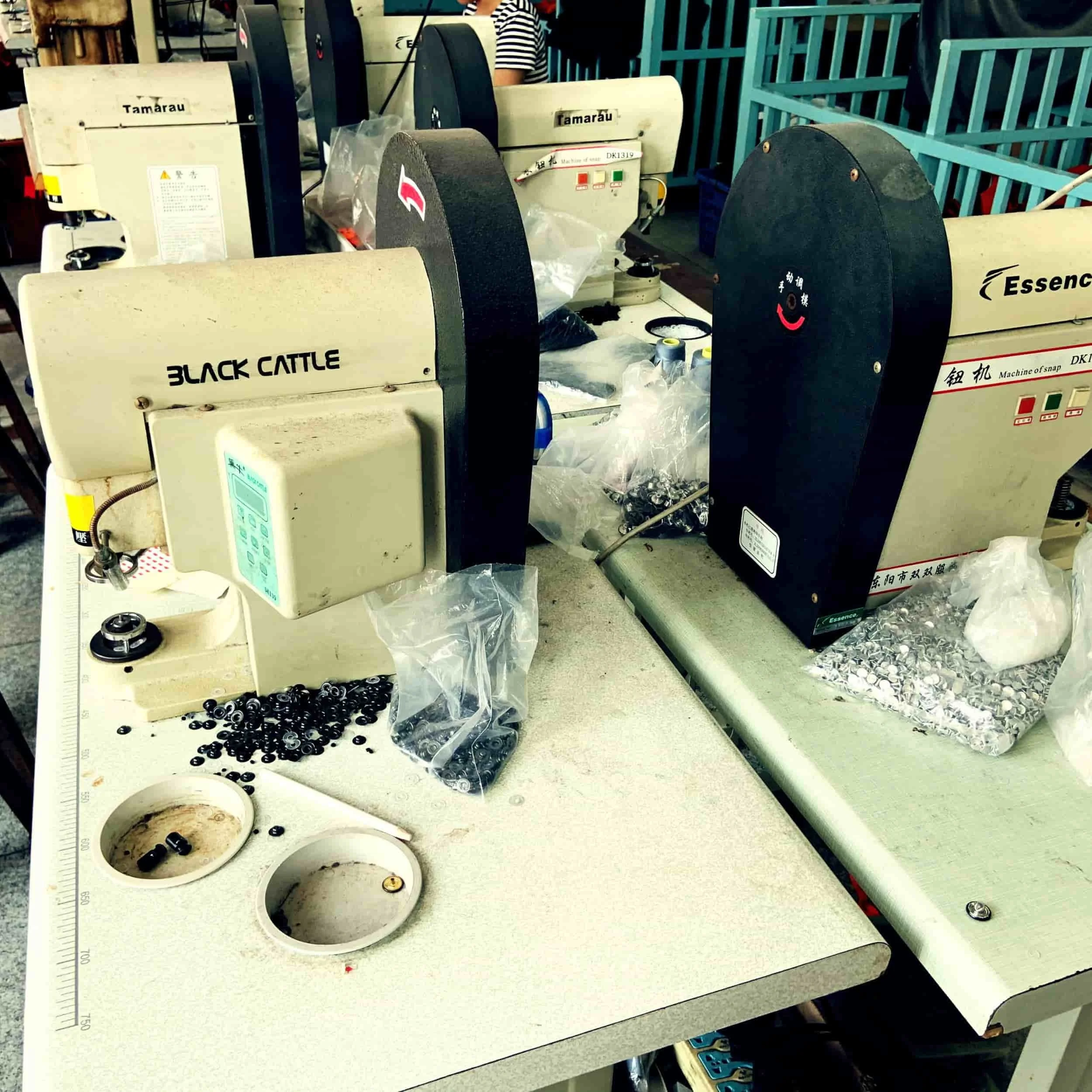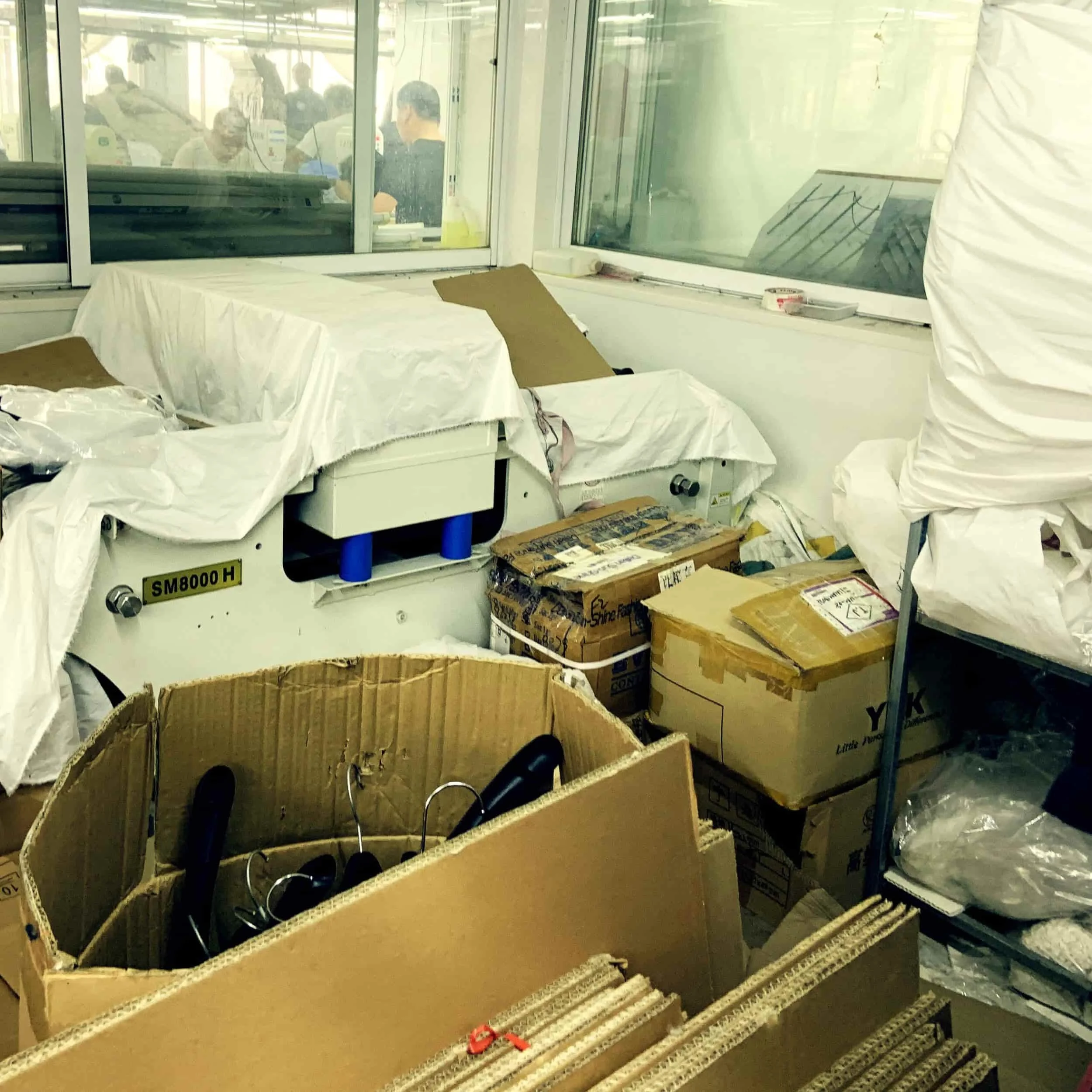Getting to the Point: The Hidden Risks in Apparel and How to Avoid Them.
From Awareness to Action: Understanding and Managing Metal Risks in Apparel Production
Every seam carries hidden risk. While brands obsess over designs and margins, few consider the very real problem of metal contamination in their factories. Even a single overlooked needle fragment or misplaced tool can turn a premium garment into a costly liability. I’ve seen these issues first-hand across decades of factory inspections, and they’re more common than many assume.
In this article, I’ll outline the key risks of metal contamination, why negligence happens, and a practical 4-point system to prevent it — including the real role of metal detectors in keeping products safe. With the right partnership between brands and factories, these controls can truly work.
Metal Contamination in Apparel: A Legal and Brand Safety Issue
Product safety isn’t optional; it’s a legal requirement. Supplying non-compliant goods violates safety regulations and invites recalls, lawsuits, and lasting brand damage.
During production, metal tools—needles, tag guns, scissors, blades—pose real contamination risks. Left undetected, these hazards can harm consumers and destroy trust. Effective metal control is therefore not a “nice-to-have”; it’s a fundamental duty. Proper protocols protect customers, workers, ensure compliance, and safeguard your brand’s integrity
Why Compliance Fails: The Reality on the Ground
In my years overseeing production across Asia, I’ve seen both strong and weak approaches to metal control. In countries like Bangladesh, Vietnam, and Cambodia, protocols are often treated as standard practice, with structured training and clear daily routines built into factory operations.
China presents a different picture. Metal-control requirements are frequently enforced only when buyers insist on them (for example, for UK or Japanese markets). Where they aren’t required, protocols can be inconsistent or entirely absent. This isn’t usually a question of cost—effective controls needing very little investment—but of awareness, leadership, and a commitment to making metal safety a priority rather than an optional add-on.
For brands, this is where partnership matters. Real improvement comes when buyers and suppliers share responsibility for education and compliance. It’s not just about avoiding risk; it’s about building integrity into the way business is done.
The Cost of Negligence: Real Incidents
I’ve been dismissed by factory owners, ridiculed by peers, and labelled obsessive by staff. But my insistence on metal control wasn’t arbitrary—it grew out of hard experience. Working with major UK retailers made metal safety non-negotiable. Early on, I saw how even a single lapse could destroy trust and contracts. That’s what drove me to develop the practical framework I use today: simple steps any factory can implement to prevent these risks without excessive cost or complexity.
And the risks are real:
Retailer incident: A sharp hand tool was found inside the packaging of a shirt—thankfully caught by shop staff before reaching a customer. The factory was fined and cautioned, with strict remediation required and a clear warning that repeated failure could end the relationship.
Supplier incident: A thread trimmer was discovered sewn inside a jacket lining. The fine? £5,000 for a first offence. A second would have meant contract termination.
4 Essential Metal Safety Controls Every Apparel Brand Needs
There are textbooks full of theory and specialists with countless certifications who can offer more sophisticated frameworks than this. But what I share here comes directly from hands-on experience: practical, user-friendly systems that actually work in real factories.
This is not a comprehensive safety manual—there will always be edge cases—but based on years of problem-solving, these four controls address most critical risks and give you a proven path to eliminating metal contamination hazards.
1. Machine Needles & Tag Gun Needles
Standard Rules:
Store all new needles in a locked, secure location.
Restrict issuing replacements to appointed staff only.
Issue a new needle only when a blunt, damaged, or broken one is returned.
Do not allow spare needles to be held by any worker.
Remove needles from machines that are not in use.
Retrieve and return all fragments if a needle breaks, and attach them to a record sheet.
If fragments are missing:
Move work from the area to a designated detection zone.
If fragments remain unfound, quarantine and destroy the affected batch.
2. Hand Sewing Needles
Standard Rules:
Store all hand sewing needles in sealable containers fitted with a pin cushion and a list of contents.
Label each container with the worker’s name.
Log containers in and out by appointed staff at the start and end of every shift.
Keep containers locked in a secure location when not in use.
3. Sharp Metal Items and Tools
Standard Rules:
Ban pins, staples, and paper clips anywhere in manufacturing, including sample rooms.
Where pins are unavoidable (e.g., fabric checks):
Store in sealable containers with a list of contents.
Log containers in and out each shift by appointed staff.
Keep containers locked in a secure location when not in use.
Secure tools (e.g., trimmers, tweezers) to workstations.
Unsecured tools (e.g., scissors, cutting blades):
Log in and out every shift by appointed staff.
Store locked in a secure location when not in use.
Ban repurposing blades (e.g., old cutting blades as knives).
Where knives are required (e.g., opening cartons):
Use only retractable knives.
Log in and out every shift by appointed staff.
Store locked in a secure location when not in use.
4. Metal Components
Standard Rules:
Control all small parts (e.g., snaps, rivets, buttons, eyelets) to avoid accidental enclosure in garments.
Use raised-sided workstations with trays/containers to prevent spillage or loss.
Remove all components from the production floor when not in use.
From Prevention to Detection: The Next Layer
The 4-point system above is about prevention—building discipline and accountability so stray metal never reaches your product. But prevention alone isn’t enough. Even the best-run factories need a final safeguard to verify that nothing has slipped through the cracks.
That’s where metal detectors come in. They’re not a substitute for safe practices; they’re the last check. And to use them properly, you need to understand their real role, limits, and how to integrate them into your overall quality system.
Metal Detectors in Apparel: Verification, Not Salvation
Metal detectors confirm your controls; they don’t replace them. Too often, I’ve seen facilities where broken needles litter workstations and owners dismiss concerns by saying, “We have a metal detector.”
Worse still, many detectors sit unused—buried under unwanted fabric or relegated to warehouse corners. Rarely do I see designated metal-free zones or proper documentation. Without strict procedures, a metal detector is reduced to a costly prop rather than a functional safeguard.
Negligence like this renders its entire purpose ineffective. Without disciplined protocols—proper placement, regular calibration, and meticulous record-keeping—true protection is impossible. The technology only works when paired with the discipline to use it correctly.
The Basics
Use a conveyor metal detector for garment checks.
Ensure components are non-ferrous to pass through a ferrous detector.
Restrict operation to trained and authorized personnel only.
Position the detector in the finishing section: after tagging/bagging and before final packing.
Maintain a metal-free packing zone:
Garments pass into this zone after detection.
Ban all metal items inside the zone to prevent recontamination.
Calibration
Calibrate the machine:
At switch-on and switch-off.
At regular intervals during each shift (recommended: hourly).
Match sensitivity to customer requirements (typically 1.2 mm ferrous).
Use the 9-point method:
Divide the conveyor into left, centre, and right.
Pass the 1.2 mm ferrous test card at the top, middle, and bottom heights.
Record calibration results and retain logs.
Metal Detection Protocol
Tag and bag all items before detection.
Keep records: checked quantities must match shipped quantities.
Hold checked items in a designated area until the next calibration passes.
Incident Procedures
If calibration fails:
Stop packing immediately.
Fix the machine.
Re-check all items packed since the last successful calibration.
If an item fails detection:
Move to a quarantine area.
Check with a handheld detector.
If metal is found → re-run through the conveyor detector.
If unresolved → cut item, place in secure padlocked reject box for disposal.
How to Build a Safety Culture That Actually Works
Even the best SOPs fail without consistent enforcement. The real driver is management. I’ve lost count of the times I’ve seen operators hide spare needles when I walk in. That’s not their failure—it’s leadership’s.
Effective metal control succeeds when owners and managers:
Understand the legal, financial, and ethical stakes.
Adopt policies formally and contractually.
Provide thorough worker training.
Post clear, visible signage reinforcing expectations.
This is not about passing an audit. It’s about embedding these habits into their daily work to protect your customers and your brand. The factories that survive and thrive will be those that treat safety as part of their quality management system
The Bottom Line
The risks are real and the fixes are practical—but they only work if factories commit to them and brands hold them accountable. Metal control isn’t a one-off audit; it’s a continuous process of training, monitoring, and enforcement.
As a brand, your role is to:
Set clear, contractual expectations for safety protocols.
Train and support your suppliers, explaining the why behind each step.
Verify and enforce through regular audits, follow-ups, and clear consequences for lapses.
The systems outlined here are tools, not magic wands. Lasting protection comes from a consistent partnership between you and your factory. The question isn’t “will you act before disaster strikes,” but “will you build a culture where these lapses simply can’t happen?”
Product safety is just one of the seven pillars I use when auditing a factory. If you’d like to see the full framework — and learn how to assess whether a factory can deliver reliably — read my companion post: From Risk to Reliability: A Practical Guide to Apparel Factory Technical Audits.
If you want peace of mind that your products are safe, compliant, and free from risks like metal contamination, let’s discuss how to build the right safeguards into your supply chain.




